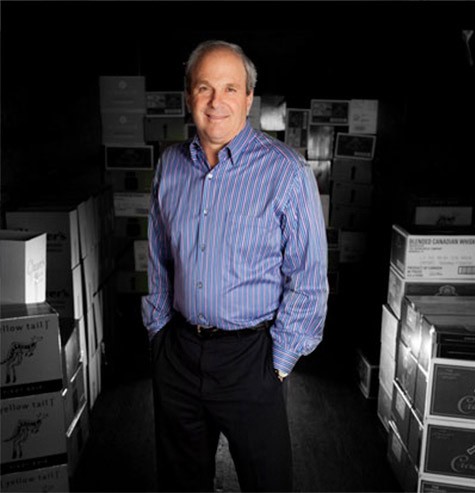Highly creative companies like Disney, Apple, Nike, Chrysler and consumer-goods upstart Method all reported increases in profitability in 2012. Their mutual strong performance and growth were all complemented by enigmatic leaders, the expected unexpected new ideas, great decisions, product design—and, highly creative, customer-tuned cultures.
Over the last decade, companies once known as highly creative industry leaders have waded into the waters of poor performance or irrelevance, some slipping away entirely. Among these are Kmart, Kodak, Digital Equipment to name a few and narrowly escaping, possibly, JC Penney and HP.
So, what is the difference? Creativity as a shared attribute across leadership teams is a critical missing ingredient. If you don’t value or foster creativity as a C-suite executive, the warning signs of irrelevance can develop slowly. You risk leaving a legacy of unintentional outcomes — a stalled balance sheet, battered egos, disenchanted customers, late- to-market products and eroding brand equity.
Understanding creative leadership
To better understand how creativity can drive growth and profit, it must be understood first. Creative leadership isn’t about being soft. To the contrary, creative leaders tend to have imagination and conviction, the ability to see alternatives, envision something new, embrace multiple points of view, to inspire, let go of ego and be aggressively willing to take risks and be tolerant of mistakes.
Creativity itself could be explained how author Mihaly Csikszentmihalyi describes it in his renowned work Creativity – Flow and the Psychology of Discovery and Invention. He states that creativity is any act, idea, or product that changes an existing domain, or that transforms an existing domain into a new one.
He goes on to state that creativity manifests in people as expressions of unusual thoughts, people who are interesting, positive, and stimulating – and, whose perceptions are fresh and judgments are insightful.
Leonard Nemoy hosted a wildly popular and creative television show In Search Of (1976-1982) that prompted the viewers to draw their own conclusions around many of the world’s mysteries. In search of how creativity drives profitability, a handful of leaders at three large enterprises explained the link between highly creative culture and the balance sheet.
Levi Strauss & Company
Inspired culture, Innovative solutions
Too often creativity is branded as the sole domain of the marketing department. So to test that theory, we asked an executive with one of the world’s more recognizable brands, Levi Strauss.
Robert Wiley, Senior Vice President, Sourcing, in the global sourcing division of Levi Strauss, knows a few things about using creativity in unconventional places – in his case, it’s the global supply chain. Wiley flies 200,000 miles a year and has seen it all in the last 20 years at Levi Strauss.
Wiley says this about creativity: “It is about approaching challenges differently and leading teams in a new way.” Eschewing anything contrived or forced like “we are all going to wear purple hats today to be creative,” his instinct about creative leadership is that it cuts through the noise, attracting the notice of your team.
Challenging ‘business as usual’
While he could not comment about the company itself, it is public knowledge that Levi Strauss is profitable, has launched a plethora of highly creative marketing campaigns and has remained a leader and legend in the retail fashion industry. In fact, in 2012 it held its own against a commoditized and saturated jeans market according to many news reports, despite drastic increases in cotton costs.
It is safe to say that for Wiley and his peers, business as usual won’t win. Wiley shared, “In my role, I work with people all over the world, they bring their own culture to the table and integrate it with the team. What inspires my Miami team versus, say my Hong Kong team, is different and I cannot pretend to have it all figured out.”
And, there it is – as a baseline for the creativity discussion just like the discussion that follows in this article — not being afraid to not know something.
Wiley further stated that in the sourcing game you have to question conventional wisdom and get creative. “At first it was all about China, until it was all about Vietnam, then Burma. It might be about all, or none of the above, and your teams have to constantly challenge conventional wisdom, or business as usual.”
You can feel a level of excitement from Wiley when he talks about this topic and as we close the conversation he says, “so many executives go on autopilot as they lead, but that is a recipe for failure. Habits are powerful, and bad habits can stagnate innovation.”
Glazer’s Distributors
Expanding EBITDA, 12% year-over-year growth
In the consumer goods distribution business, Glazer’s Distributors, a $3.8 billion (U.S.) company, hired maverick President and CEO Sheldon “Shelly” Stein in 2010 to make big changes.
This former investment banker’s challenge was to tackle opportunities from a new perspective to differentiate the brand amongst many old-line, family-owned dominant distributors. Glazer’s is now the fourth largest in its category.
“If I were starting from scratch, how would I do this … what is the best way to run this business?” was Stein’s first application of creative thinking. He stepped back, asked questions and moved away from the typical systems in this market, adding that many executives aren’t willing to “not know the answer,” quoting a former mentor of his as saying that a bad executive is one “who thinks his or her own body odor smells like perfume.” The point being you have to be willing to be wrong or naïve and entertain alternatives to your beliefs to harness creativity.
“Creativity is thinking outside the norm, knowing what really matters in making your company win, and finding a better way to do it,” Stein says.
Glazer’s growth has been astounding. The company has seen 12 percent year-over-year growth since 2010 and, going into 2013, expects more.This growth is underscored by expanding EBITDA.
However, you can’t drive creative solutions by just starting at the balance sheet. Stein attributes some of his success to:
- His belief in his team
- An open-door policy
- Staying aware that asking the most senior people their opinions means junior employees will never give you the real answer.
From ‘no’ to ‘yes’
You have to drop the attitude, get out there, and talk to employees and customers in a meaningful way.
Stein was asked for an example of alternative thinking and creative problem solving to overcome a “no” to get to a “yes.” His answer was, “I have about 20 of them.” He went on to describe how a leader had said the current sales and account management process could not be redesigned to save money and make customers happy at the same time (it had been that way for 50 years).
His employees and leaders, who are free to express their feelings and make mistakes, quickly went to work and designed a new approach. Since that change, profits have doubled.
When you hear Stein speak, you immediately hear the spark, the energy, and the passion. He creates comfort without losing a very aggressive edge. On the topic of assertion versus aggression in pushing creative ideas, Stein says that creativity and being aggressive go hand in hand. Otherwise taking “no” for an answer and dealing with basic, safe assertions will rule.
When asked if a COO and a CFO can be creative, he says, “I wouldn’t hire one who wasn’t, so I do not see why they can’t be.” Whether it is working on the front lines, in the distribution center, or fostering employee opinion, Glazer’s executives think differently about how to lead and the results are showing.
Ryan
Creative culture, Blockbuster performance
The corporate financial consulting field is a huge space. Companies like KPMG, Deloitte Consulting and PricewaterhouseCoopers dominate. There is one CEO who came from the big firm space, started small in the corporate tax services space, and is rocketing back up the competitive ladder with 20+ diversified corporate tax and financial accounting practice areas – profitably. That would be Brint Ryan, CEO of Ryan in Dallas.
Ryan has been awarded just about every award you could imagine from best places to work to a leader in customer services. Ryan was set to break the $300M mark in 2012; it could reach $400M in 2013, and in the next three years is poised to reach the $1 billion mark.
Part of what’s created that growth is creativity.
“I have never been afraid to push the envelope and reach for the stars in services, client satisfaction, and technology, and I ultimately realized I needed to take the same approach with our work environment,” Brint Ryan says.
Creative culture
Delta Emerson, Executive Vice President and Chief of Staff — and Ryan’s right arm — went on to say, “once we applied the same level of creative thinking to our culture as we did to functional areas, the results have been unbelievable – a company’s bottom line and creativity are intertwined.”
Ryan eschewed the rigid culture typical of big financial consulting firms for a flexible work environment.
Called MyRyan, the employee engagement program not only supports flexible work arrangements, career growth and opportunity, it’s a way of empowerment. Employees may work from home, remotely or in-office, as long as they are delivering the expected results.
Team members are empowered to do what is best to get the job done. The same applies to how time-off is administered.
Scaling for growth
 Although a creative work environment can drive growth and profit, it’s not a switch that can be turned on and off, Emerson says.
Although a creative work environment can drive growth and profit, it’s not a switch that can be turned on and off, Emerson says.
The Ryan executive team has shown that organizational learning, managerial flexibility and constantly deploying innovative business practices go hand-in-hand with gains against the competition.
In asking about the C-Suite at Ryan the discussion turned to how the CIO/CTO and CMO could use creativity. Emerson states that typically C-level executives have been functional domain experts and “they need to be comfortable working outside their area of expertise to get creative.”
Ryan’s CIO, for example, has played a role in looking at community outreach for the company and developed Ryan-teering [volunteering] to track and recognize peer- to-peer community outreach and giving. The CFO was very involved in helping think about metrics for MyRyan. “Sometimes leaders kill their own good ideas because they go off in a dark corner or stay hidden in the C-suite and do not involve people to explore,” Ryan says.
It is evident that creativity is critical, whether you are on a climb to the top of your market or protecting your position and want to ensure you have all the ingredients for sustained and meaningful growth and profit.
As Csikszentmihalyi describes in his work, creative leaders possess the ability to be both extremely smart and very naïve at the same time. They naturally tend to balance extroversion and introversion. Leaders are able to navigate both and they know the importance of seeing and hearing others’ ideas.
Imagine the possibilities if you and your leadership team mastered these same characteristics. Get creative. Anything is possible.






